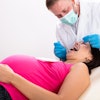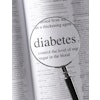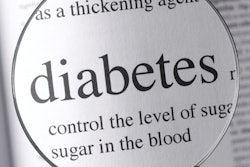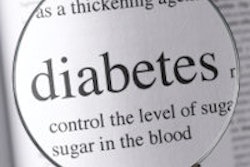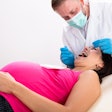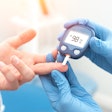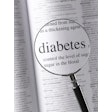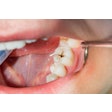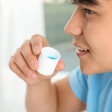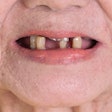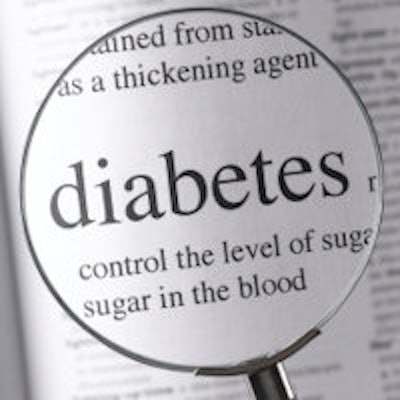
There is a lot of supportive literature on screening dental patients for conditions such as hypertension and cholesterol, and now a new field trial has found that the dental setting can play an important role in identifying patients who may have diabetes or prediabetes.
A significant percentage of Americans with diabetes remain undiagnosed, and a large number of them, both children and adults, will see their dentist every year, so it is important to determine the feasibility of screening for diabetes at the dental office, said study author Robert Genco, DDS, a distinguished professor of oral biology and microbiology at the State University of New York at Buffalo, in an interview with DrBicuspid.com.
Early diagnosis of diabetes provides an opportunity to reduce smoking, hypertension, dyslipidemia and other risk factors for cardiovascular disease and other complications of diabetes. Also, dentists need to be aware of whether their patients have diabetes, because uncontrolled diabetes is associated with an increased progression of periodontal disease.
“The dental office is a great place to screen for conditions like diabetes.”
Dr. Genco and colleagues assessed whether point-of-care measurement of hemoglobin (Hb) A1c from a finger-prick blood sample combined with use of the American Diabetes Association Diabetes Risk Test, demographic and health data, and periodontal evaluation would be useful in establishing a feasible method of screening for undiagnosed diabetes and prediabetes in dental practices (Journal of the American Dental Association, January 2014, Vol. 145:1, pp. 57-64).
They collected data from 11 general and periodontal specialty dental offices and a dental clinic within a community health center. They included 1,022 participants 45 years or older with no history of diabetes.
The dental offices recorded participants' dental and medical histories, and performed dental examinations, including periodontal evaluations. They evaluated the patients' diabetes risk with the risk test and the HbA1c measurement. The researchers also compared screening in dental practices with screening in a dental clinic to assess the rate of patient compliance with referral to physicians for a diagnosis.
Although there is a considerable amount of literature supporting diabetes screening in the dental office, this latest study had a few unique features. Dr. Genco explained that the HbA1c test they used provides a relatively stable reading over the many hours of the day.
"That is useful since patients come into the dental office at varying times of the day," he said.
Dr. Genco added that another unique feature of their study is that they tried to replicate the conditions in the dental office as much as possible.
"Many studies done on this topic have been more controlled trials, but this is a field trial," he explained.
Dr. Genco and his colleagues found that of the 1,022 participants screened at all locations, 416 had an HbA1c value of 5.7% or higher and were referred to their physicians for diagnosis. No further action was taken with the remaining 606 participants, but they were educated about their risk for developing diabetes and encouraged to receive regular medical exams.
Of the 416 patients referred to a physician, 146 received a diagnosis during the follow-up period of about one year, with 12.3% diagnosed with diabetes mellitus, 23.3% with prediabetes, and 64.4% with no diabetes.
The study results show that screening for prediabetes and diabetes is feasible in a dental office, with acceptance by the dentists and dental office staff members, patients' physicians, and patients, the study authors noted.
"The dental office is a great place to screen for conditions like hypertension, cardiovascular disease, cholesterol, and diabetes," Dr. Genco said. "Especially in the case of prediabetes, if these patients are prescreened at the dental office, the onset of diabetes can be prevented or delayed through lifestyle changes."
The authors did report a remarkable difference in compliance between the private dental offices and the community health center. In the health center, 78 of 99 participants (78.8%) obtained a medical diagnosis, while only 68 of 317 participants (21.5%) referred from the private dental offices did so.
One of the major hurdles of offering diabetes screening in the dental office encountered during the study was the low compliance of the patients, Dr. Genco said.
"Clinics possibly have higher compliance, because they offer combined medical and dental treatment, and patients feel like that is their medical home," he added.
Also, the study authors noted that 10 of the 12 clinical sites reported that they would carry out HbA1c screening if it were covered by insurance.
Insurance can be a problem, Dr. Genco explained, because some patients who feel asymptomatic and then get a test that finds they have a serious condition such as diabetes may have financial reasons to not follow up.
"I am optimistic that insurance companies with see the benefit of early detection of a condition like diabetes in the dental office," he said. "In fact, companies that offer both medical and dental coverage would be very interested."
Dentists should be alert to the possibility that patients who have severe periodontal disease may be at risk for diabetes, and if they don't offer to screen them, they can suggest a screening at their next medical visit, Dr. Genco said.
"Screening for diabetes and prediabetes in the dental office may provide an important benefit to patients and encourage interprofessional collaboration to achieve a chronic care model in which healthcare professionals work together to care for a panel of patients," the authors concluded.
